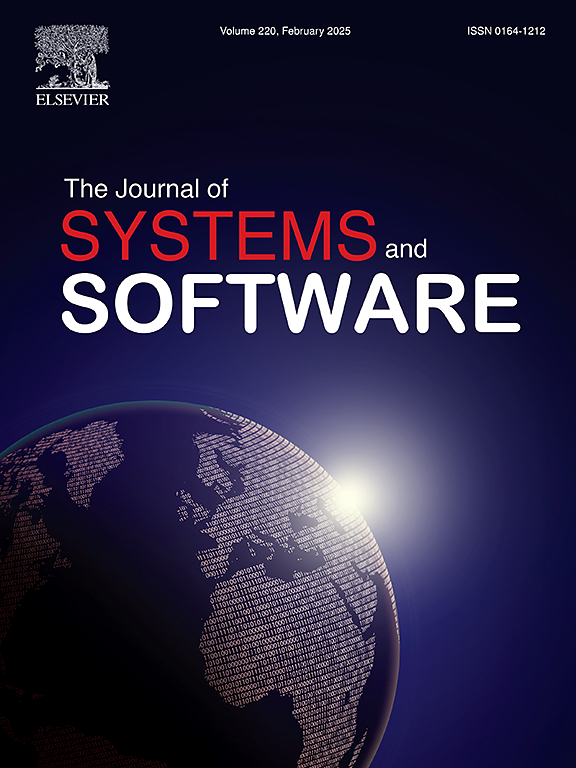Unveiling the microservices testing methods, challenges, solutions, and solutions gaps: A systematic mapping study
IF 3.7
2区 计算机科学
Q1 COMPUTER SCIENCE, SOFTWARE ENGINEERING
引用次数: 0
Abstract
Microservices architecture (MSA) is widely used by enterprises and related practitioners. Due to the importance of MSA in the industry, failure to identify its potential faults and errors will cause serious consequences. Consequently, it is imperative to conduct testing on the MSA to guarantee its quality and reliability. As a key task in the software development lifecycle, microservices testing can effectively identify defects and errors caused by incorrect or unexpected behavior of microservices software, ensuring the quality of microservices software. Currently, related reviews lack a comprehensive summary of the challenges and solutions faced by microservices testing. To fill this gap, this study provides a comprehensive review of the microservices testing. It analyzes 93 primary studies from 19595 pieces of research, eventually identifying nine categories of microservices testing methods, four types of challenges, and 5 specific solutions to challenges. The conclusion shows that the current part of microservices testing methods is significantly different from other architectural testing methods, lacking exploration of testing methods under different communication mechanisms. Furthermore, this paper discusses the above conclusions, providing directions to further narrow the gap in solutions to challenges and future development directions for microservices testing.
揭示微服务测试方法、挑战、解决方案和解决方案差距:系统制图研究
微服务架构(MSA)被企业和相关从业人员广泛使用。由于 MSA 在行业中的重要性,如果不能识别其潜在的故障和错误,将会造成严重后果。因此,对 MSA 进行测试以保证其质量和可靠性势在必行。作为软件开发生命周期的关键任务,微服务测试能有效识别微服务软件不正确或意外行为导致的缺陷和错误,确保微服务软件的质量。目前,相关综述缺乏对微服务测试面临的挑战和解决方案的全面总结。为了填补这一空白,本研究对微服务测试进行了全面综述。它分析了 19595 篇研究中的 93 项主要研究,最终确定了 9 类微服务测试方法、4 类挑战和 5 种应对挑战的具体解决方案。结论表明,目前部分微服务测试方法与其他架构测试方法存在明显差异,缺乏对不同通信机制下测试方法的探索。此外,本文还对上述结论进行了讨论,为进一步缩小挑战解决方案的差距提供了方向,也为微服务测试提供了未来的发展方向。
本文章由计算机程序翻译,如有差异,请以英文原文为准。
求助全文
约1分钟内获得全文
求助全文
来源期刊

Journal of Systems and Software
工程技术-计算机:理论方法
CiteScore
8.60
自引率
5.70%
发文量
193
审稿时长
16 weeks
期刊介绍:
The Journal of Systems and Software publishes papers covering all aspects of software engineering and related hardware-software-systems issues. All articles should include a validation of the idea presented, e.g. through case studies, experiments, or systematic comparisons with other approaches already in practice. Topics of interest include, but are not limited to:
•Methods and tools for, and empirical studies on, software requirements, design, architecture, verification and validation, maintenance and evolution
•Agile, model-driven, service-oriented, open source and global software development
•Approaches for mobile, multiprocessing, real-time, distributed, cloud-based, dependable and virtualized systems
•Human factors and management concerns of software development
•Data management and big data issues of software systems
•Metrics and evaluation, data mining of software development resources
•Business and economic aspects of software development processes
The journal welcomes state-of-the-art surveys and reports of practical experience for all of these topics.
 求助内容:
求助内容: 应助结果提醒方式:
应助结果提醒方式:


